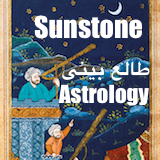The New Yorker:
Why Superman’s creators got a raw deal.
By Deborah Friedell
June 17, 2013
In 1975, when trade magazines reported that the first Superman movie was in development, a thousand news outlets across the country received a peculiar letter, single-spaced and ten pages long. “I, Jerry Siegel, the co-originator of Superman, put a curse on the Superman movie!” the letter said. “I hope it super-bombs. I hope loyal Superman fans stay away from it in droves. I hope the whole world, becoming aware of the stench that surrounds Superman, will avoid the movie like a plague.” In comics and on television, Superman stood for “truth, justice, and the American way”—as his famous catchphrase has it. But Siegel wrote that “the people who exploit and profit from Superman are greedy and selfish,” and had cheated him out of the rights to his creation. Now he was sixty-one years old, destitute, and in poor health. He begged fans to avenge him. The episode forms the climax of Brad Ricca’s “Superboys” (St. Martin’s), a dual biography of Siegel, who wrote the first “Superman” stories, and of Joe Shuster, who first drew them. It’s a portrait of the artists as nebbishes, Clark Kents who conjured their longings into a bankable fantasy but signed away their rights to it.
They met in high school in Cleveland, during the Depression. Jerome Siegel wrote for the student newspaper, and Joe Shuster was one of its cartoonists. They were both sons of Jewish immigrants who worked in the garment trade. Neither had money for college, but tailoring didn’t appeal, and Siegel had read in Fortune that “some twenty comic strip headliners are paid at least $1,000 a week.” He couldn’t draw, but Shuster was amenable. For the student paper, they collaborated on a Tarzan takeoff called “Goober the Mighty,” and a Buck Rogers takeoff called “Interplanetary Police.” Much of the interest of Ricca’s book comes from his detailed trawl through the pair’s early efforts, and the illustrations he reproduces. For a science-fiction magazine, which they printed on the school mimeograph machine, they created “The Reign of the Super-man”: a hobo ingests a serum derived from a meteor fragment, becoming brilliant, strong, and capable of reading minds. But, unlike the later creation, he is a villain. He robs a pharmacy, manipulates stocks, wins every race at the track. The next, and more benign, Superman incarnation was set in the future. Just before Earth explodes, a “super-powered scientist-adventurer” uses a time machine to send himself back to the present. In another version, the scientist sends his baby instead, to be found by passing motorists named Kent.
Go to link










Comments